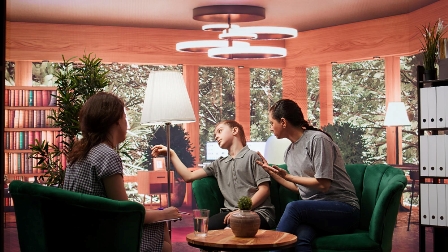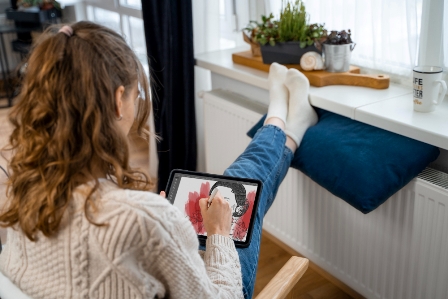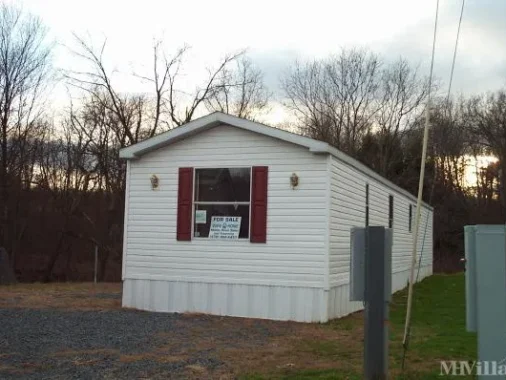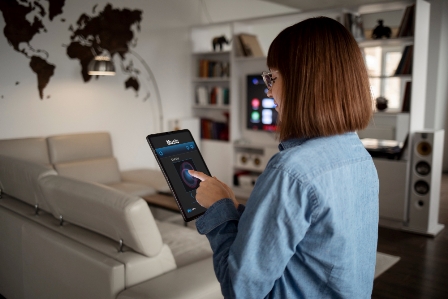Turning your regular home into a “smart” one might sound like something out of a sci-fi movie, but in reality, it’s more accessible than ever. Whether you want to automate your lights, tweak your thermostat from your phone, or beef up your home security, smart home technology offers simple solutions to improve your daily life. If you’re just starting out, this guide will walk you through the essentials without overwhelming you.
What Exactly Is a Smart Home?
At its core, a smart home is a space equipped with connected devices that can be controlled remotely or set to operate automatically. These gadgets talk to each other (and to you) through your Wi-Fi network, and you can usually manage them through apps on your phone or by using voice commands via assistants like Alexa, Google Assistant, or Siri.
Some common smart home devices include:
- Smart thermostats (Nest, Ecobee)
- Smart lighting (Philips Hue, LIFX)
- Video doorbells and smart locks (Ring, August)
- Voice assistants (Amazon Echo, Google Nest)
- Smart plugs and appliances
The goal? To make life easier, safer, and often more energy-efficient.
Why More People Are Embracing Smart Home Tech
Convenience That Adapts to Your Lifestyle
Imagine walking into your house and the lights turn on automatically, your favorite playlist starts playing, and the thermostat adjusts to your preferred setting. Smart homes are all about making your space respond to you—saving time, cutting down on repetitive tasks, and adding a touch of luxury to everyday routines.
Cutting Down on Energy Waste
With smart thermostats and lighting systems, your home becomes more energy-conscious. According to Energy Star, homeowners using smart thermostats can save an average of $180 a year by reducing unnecessary heating and cooling.
Better Peace of Mind
From getting alerts when someone’s at your door to checking security cameras while you’re at work or on vacation, smart security devices give you more control over your home’s safety.
Accessibility for Everyone
Voice-controlled and app-based systems are especially helpful for older adults or anyone with limited mobility. With a simple voice command, you can turn off lights, adjust the heat, or even lock the front door.
How to Get Started With a Smart Home Setup
Begin with the Basics
You don’t need to dive into the deep end. Start small and build your system over time. Many beginners begin with:
- A smart speaker (Amazon Echo or Google Nest Mini)
- A few smart bulbs (like Philips Hue or Wyze)
- A smart plug (to control appliances remotely)
These are easy to install, relatively inexpensive, and offer an immediate taste of the convenience smart homes provide.
Choose Your Platform Wisely
Before you start adding more devices, decide on the ecosystem you’ll use. Whether it’s Alexa, Google Assistant, or Apple’s HomeKit, sticking to one platform helps keep everything running smoothly and avoids compatibility headaches.
Strengthen Your Wi-Fi
A reliable internet connection is the backbone of any smart home. If your home has dead spots or slow speeds, consider a mesh Wi-Fi system like Eero or Google Nest WiFi to make sure every room is covered.
Customize to Fit Your Life
Most smart devices come with companion apps that let you set up schedules, routines, and automation. For example, you could program your bedroom lights to fade off when it’s time to sleep or set your thermostat to turn down when you leave for work.
Categories of Smart Home Devices to Consider
Lighting Systems
Smart lights let you dim, brighten, and change the color of your bulbs from your phone or via voice. Some even allow you to set schedules that mimic natural daylight.
Top picks: Philips Hue, LIFX, Govee
Thermostats
These devices learn your preferences and optimize heating and cooling schedules, reducing both energy usage and monthly bills.
Top picks: Nest Learning Thermostat, Ecobee SmartThermostat
Security Devices
From video doorbells to motion-activated cameras, these systems help protect your home. Many let you check in from anywhere and send instant notifications if something seems off.
Top picks: Ring, Arlo, SimpliSafe
Entertainment Integration
Smart TVs and streaming devices make it easy to watch shows, play music, or control your whole entertainment setup with just your voice.
Appliance Control
Smart fridges, washers, ovens, and even vacuums are available now. While more of a luxury, they can add serious efficiency to your daily routines.
Real-Life Story: Sarah’s Smart Apartment
Sarah, a 33-year-old marketing executive, wanted her small apartment to feel more modern and manageable. She started with a Google Nest Mini and a couple of smart bulbs. Then she added a TP-Link smart plug to automate her coffee maker and later installed a Ring doorbell for added security.
Her setup wasn’t expensive or complex, but it transformed the way she used her space. Her lights respond to her schedule, her apartment feels safer, and she saves a little money each month on electricity.
Important Things to Keep in Mind
Security and Privacy Matter
Smart homes collect data, so it’s crucial to protect your devices:
- Always change default passwords
- Use two-factor authentication when possible
- Keep your device software updated
Budgeting for Your Smart Setup
Smart tech doesn’t have to break the bank. Start with essentials and expand gradually. If you’re building out a full system, consider budgeting for a few higher-end devices over time.
Power Considerations
Many devices need constant power and Wi-Fi. Backup batteries or a UPS (Uninterruptible Power Supply) can help keep things running during outages, especially for things like locks and security cameras.
My Take: Why Smart Homes Are a Game-Changer
When I first dipped into smart home tech, I didn’t expect much. But once I started using a few gadgets, I was hooked. I love that I can control my lights without getting out of bed or check who’s at the door when I’m not home. It’s about the little conveniences that add up to a more comfortable, secure lifestyle. You don’t need to go all out—just start with what makes sense for you, and go from there.
FAQs
Absolutely. Most modern smart home devices are designed to be user-friendly. Setup usually takes a few minutes and comes with clear, app-based instructions.
Yes! Many devices, like smart plugs, bulbs, and portable cameras, don’t require permanent changes. They’re perfect for apartments and can move with you.
Start by buying from trusted brands. Then, change default login info, turn on two-factor authentication, and stay on top of software updates. It’s simple, but very effective.
In a world that’s constantly moving, smart homes help you slow things down and make your environment work with you. Whether you’re tech-curious or just looking to simplify your routine, this is a change worth making—one smart device at a time.





